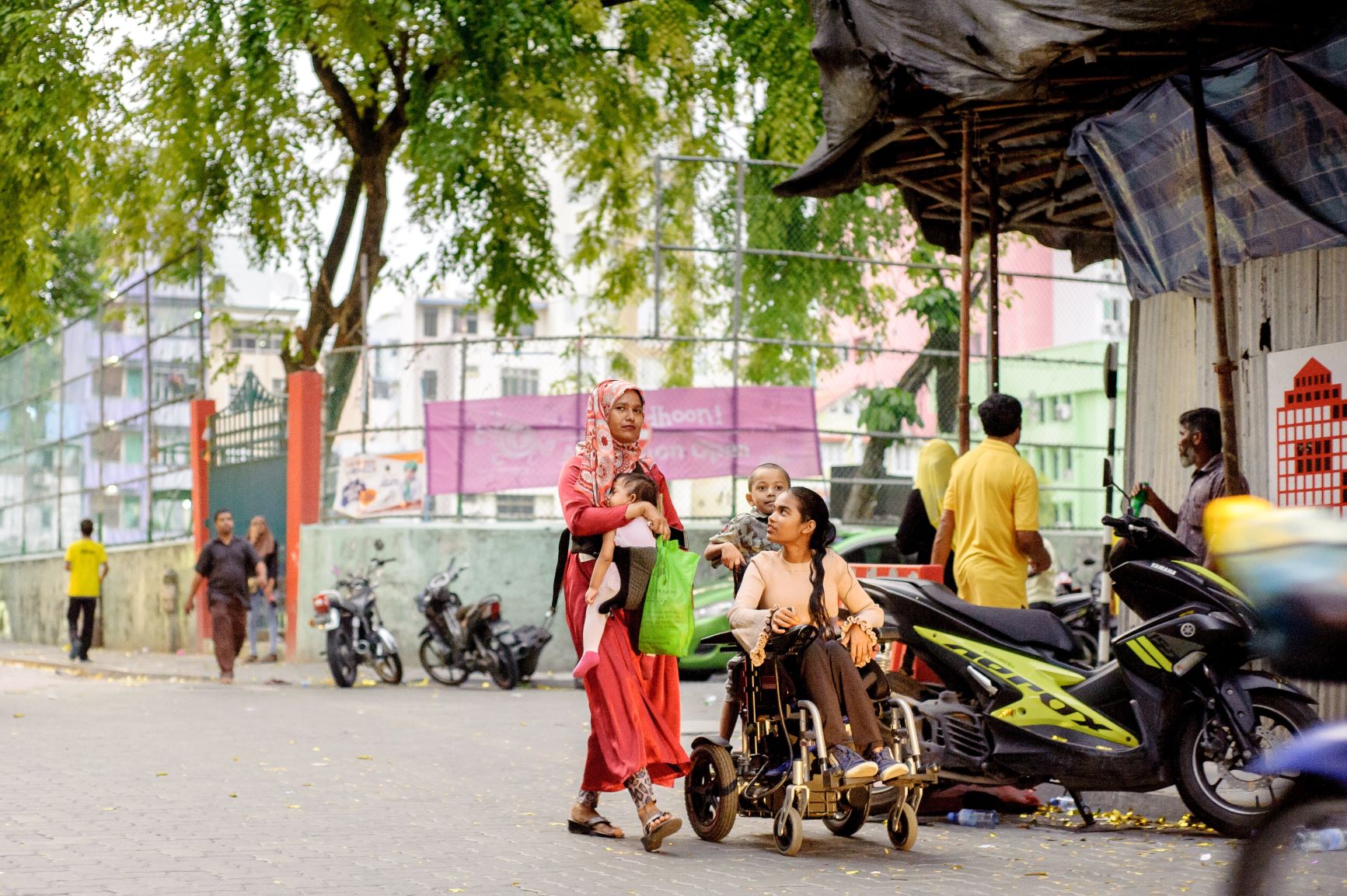
The UN Global Road Safety Week (UNGRSW) is approaching under the theme of 30km/h streets where people walk, live, and play. While evidence clearly supports that low-speed streets save lives, there are also a multitude of other valuable reasons for your community and your policymakers to support the call for 30km/h in urban areas where people and vehicles mix. Working with campaigners and special interest groups whose causes and interests align to ours makes for a stronger campaign with greater potential reach and impact.
Road risks such as speeding that disproportionately affect pedestrians and cyclists the most are an equality issue: women are more likely to be pedestrians, children are more likely to be pedestrians (and if it is too unsafe or they are too fearful to walk to school, then inequality is exacerbated by loss of education), people on low-incomes are more likely to be pedestrians.
The needs of persons with disabilities are often overlooked: in building and street design, work opportunities and education, culture and media, and countless other areas. Road safety is no exception. Sara Múnera Orozco is the Founder of Whee, an NGO working to transform society and avoid exclusion in Colombia and Latin America.
Sara highlights the inaccessibility of sidewalks, including lack of ramps and the width and condition of the sidewalks themselves, especially in low- and middle-income countries. As a result, she says, wheelchair users and the elderly are obliged to walk directly on the street. “Walking on the street is unsafe for them and the people they walk with,” she says, “but in some contexts there is no other way to move around.” This is exacerbated in hilly areas, where wheelchair users (even those with power wheelchairs), need to zig zag up the street to overcome the hilly area and continue their way.
Sara also draws attention to hidden disabilities and the mobility issues they face. She says, “For people with intellectual disabilities, it can be challenging to understand the red lights and where to cross streets. It is the same for people who are blind and have not received proper training on how to move around.” Extra protection and attention is needed to keep these road users safe. Faster speeds mean that drivers are unable to stop as quickly if someone with a disability steps out in front of them.
Sara says, “If a person needs to use the street to walk or propel a wheelchair, fast vehicles could be fatal; it’s more difficult for the driver to stop or avoid them, and if there is a collision at a higher speed, it is likely to have worse consequences. Through Whee, we have known a lot of users who have been involved in car crashes.”
“30km/h streets would definitely make the road safer for wheelchair users and the elderly population. It would decrease the number of crashes they have, the consequences of those crashes, and will allow them to fully participate in normal daily life.”
Sara advises road safety NGOs to think about how different groups of road users are affected by speed and how they can benefit from low-speed streets and to see the issue through their eyes. She says, “Road safety NGOs need to show other activists how this campaign can benefit us all, and support a more equal world, in which we all can participate and enjoy different activities.”
She also suggests that NGOs present relevant data about the particular audience. For example, she says, “by recalling that woman, children, people with disabilities and older adults are more likely to be pedestrians.”
Read more about Whee HERE.
Groups like Whee, working for social inclusion should be obvious allies for safer, healthier, liveable streets that consider people before vehicles. We road safety NGOs, need to seek out these groups, show them why supporting 30km/h streets is good for their beneficiaries, and mobilize together to push for change.
Image: Pixabay/Pixel Anarchy